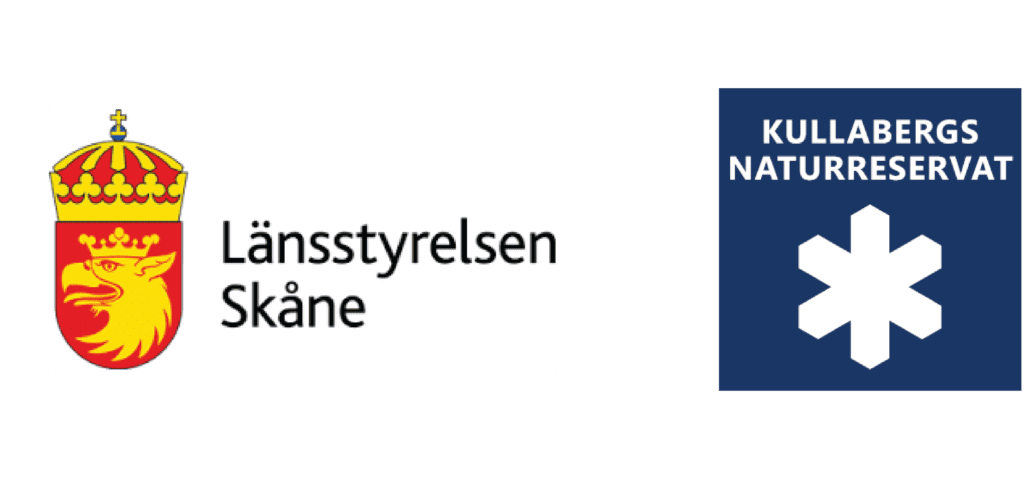The Kullaberg Nature Reserve Youth+ Experience
In the summer of 2022, Kullaberg Nature Reserve invited two groups of Youth+ to stay, work, learn and share their experiences over the course of two three-week periods. These 9 young people came from Austria, Estonia, Italy, Latvia, the Netherlands, Slovenia, Spain and Switzerland – a very international EUROPARC experience!
Article issued by Moritz Mairl
The Kullaberg Nature Reserve Youth+ Experience
Kullaberg Nature Reserve is located on a peninsula in southern Sweden. and is one of the most visited protected areas in Sweden thanks to its unique landscape, rich biodiversity, and cultural history. Over the course of 3 weeks, the two groups of Youth+ were involved in many different aspects of Protected Area management, incorporating all the four pillars of the Youth+ programme into their work: Nature Conservation, Communication, Leadership and Advocacy.
Nature conservation and recreational space are very close to each other in the area. Visitor management therefore plays a very important role in the Protected Area management. Both Youth+ groups spent many days in the sun, rain and wind, collecting visitor surveys which are used to gather important information about possible conflict points between nature conservation and tourist recreation. These data will be incorporated into a long-term visitor management program. Visitor management also included practical work. For example, we extended a hiking trail with wooden planks to keep visitors on the trail and to protect the vegetation.
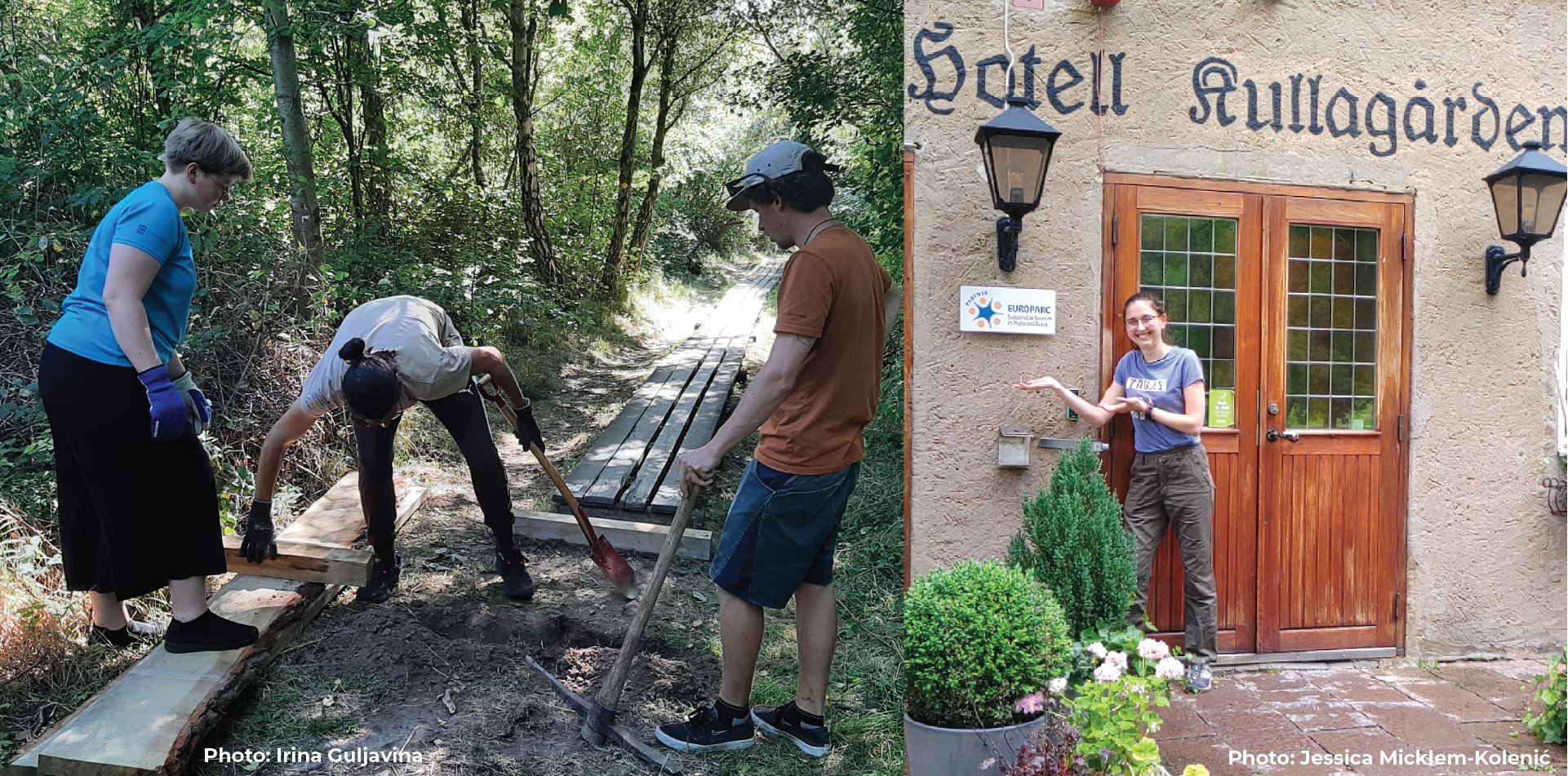
The Youth+ group assisting with trail building and with surveys for the European Charter for Sustainable Tourism
The history of the Nature Reserve is marked by tourism and cultural landscapes. Our meetings with local actors were very informative and brought the history of the region to life. And what better way to talk about the beginnings of the bathing culture in Mölle than during a classic fika (a traditional Swedish coffee and cake break). In the future, the local community plan to be even more involved with the European Charter of Sustainable Tourism, a great way for local businesses and the park to facilitate long-term sustainable development in and around the Protected Area.
While meeting with a local farmer, on the other hand, there was no time for a fika. Sheep had to be unloaded, and the cultural landscape that has been maintained for centuries should continue to be preserved. Even if the work is now only financially viable through subsidies, the cultural heritage is preserved and by working with old native breeds of sheep and cows, the farmer contributes to the promotion of biodiversity. A work that should receive far more recognition and access to financial support.
Nature is also changing in Sweden. Invasive species threaten the native flora and fauna. To curb the problem, the Youth+ assisted with both tangible actions (uprooting invasive plants) and education of the local community and tourists. At the same time, new habitat have been created for rare native species. Due to a lack of deadwood in the forest, bats find it difficult to find enough nesting holes. To counteract this problem, the International Youth+, the local Youth+ and the Kullaberg Junior Rangers have been building some bat houses and installed them in the forest. We hope for numerous inhabitants!
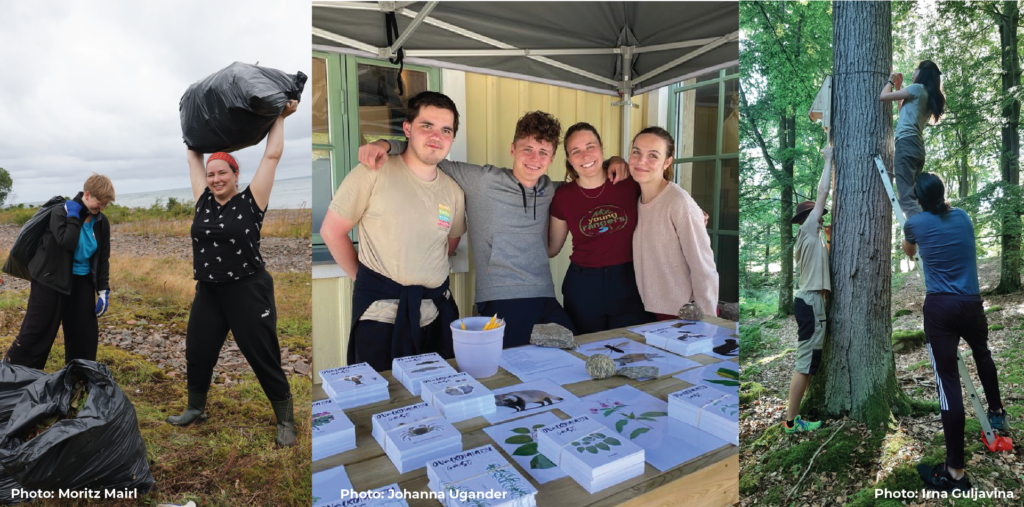
The Youth+ eradicated invasive species, helped raise awareness about their danger to local species, and put up bat houses for conservation.
The Kattegat Strait between Denmark and Sweden is one of the busiest shipping routes in the world. This became very clear when looking out from the lighthouse, the landmark of the nature reserve. Nevertheless, many sea creatures feel extremely comfortable around the peninsula. Lessons about the marine and shoreline life in the area allowed the Youth+ to better understand the biodiversity of the region and experience it first-hand, whether in the Naturum (the visitor centre), while snorkeling or during a Porpoise Safari. Even garbage collecting became an exciting job when you can search for garbage in a kayak or boat along the impressive cliffs!
The Kullaberg Nature Reserve offers enormous diversity in a relatively small area. The participants, each of whom has already gained experience in Protected Areas in their home countries, appreciated this. But what about the young people in the region around the nature reserve? This question was explored in a design thinking workshop.
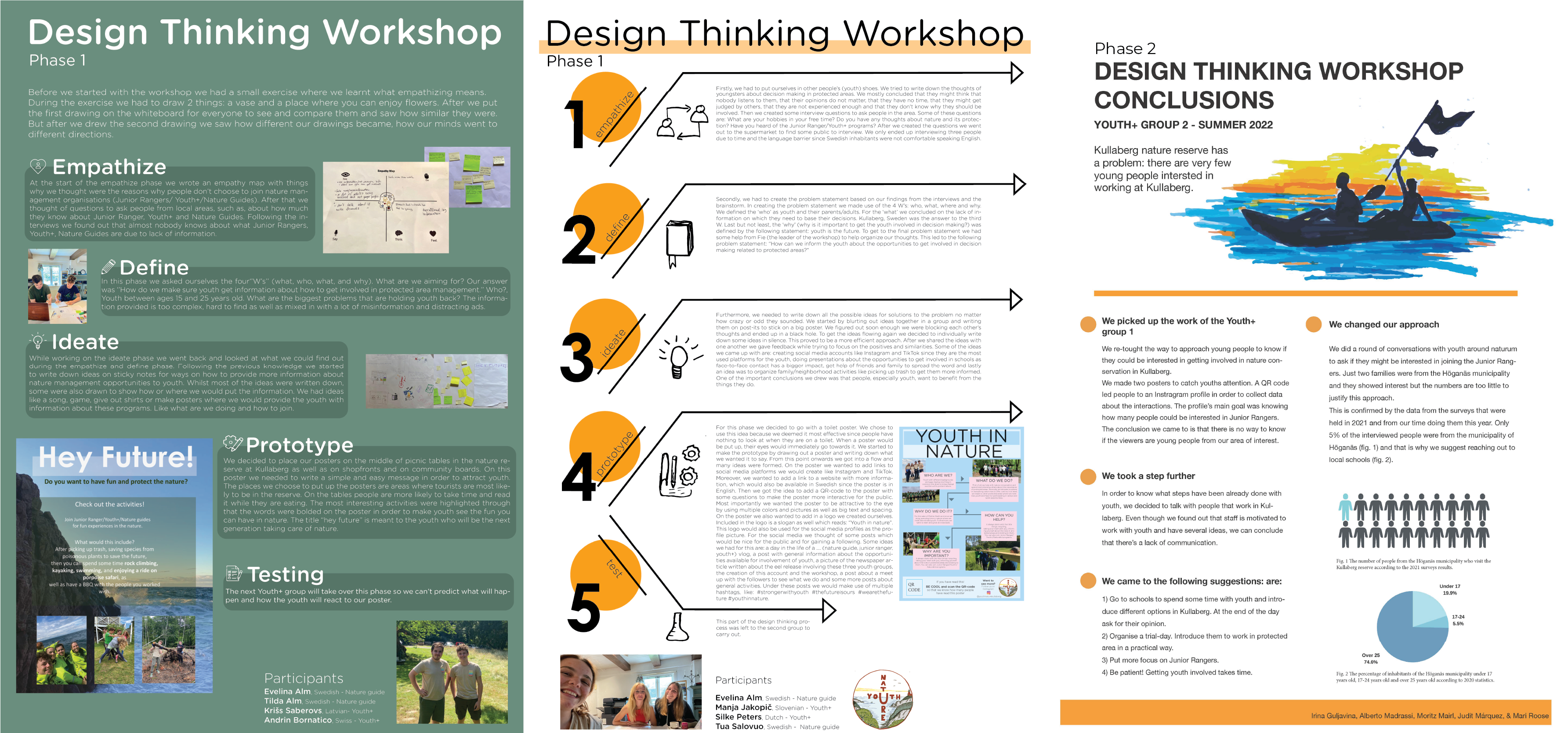
The three posters explaining the Design Thinking Process of Groups 1A, Group 1B (both doing Phase 1) and Group 2 (doing Phase 2)
You can download them here:
Group 1A: Process & Poster
Group 1B: Process & Poster
Group 2: Process & Poster
The Youth+ groups worked together with the local Naturvärdar (a local seasonal youth workers in Kullaberg Nature Reserve), following the design thinking process to evaluate how the Protected area could engage more young people. The first group of Youth+ started the process by interviewing local teenagers and young adults. As a group, problems were recorded, new solution-focused strategies were developed and tested. Posters were used to make young people in the nature preserve aware of what opportunities exist for participation. Interactions with the posters were then tracked on social media using QR codes. The results were evaluated together. Design thinking is a non-linear process that involves setbacks and many questions. For example, the poor interaction with the posters led to some frustration, but also to the development of new solutions and strategies.
The second Youth+ group then continued the design-thinking process to look at how young people can be better reached and what it takes to keep them involved in the park’s work. As an outcome of the workshop, posters and scripts were developed, which present strengths, weaknesses and possible courses of action for Kullaberg Nature Reserve. This should help the management of the reserve to be more active in the field of youth work in the future. Since Kullaberg Nature Reserve is considered the flagship for EUROPARC youth programs in Sweden, in the best case this can have an impact on the whole country!
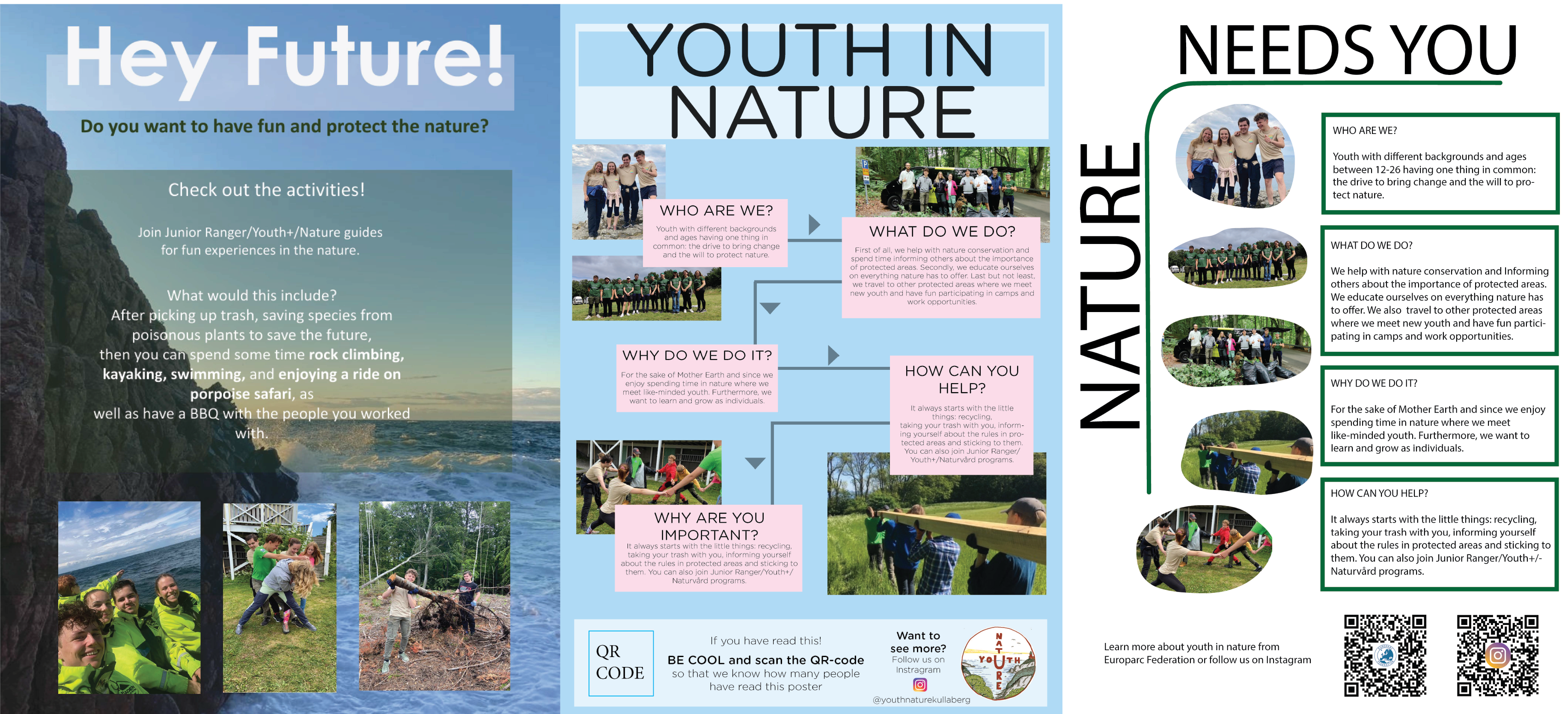
Advertising youth engagement in Kullaberg Nature Reserve
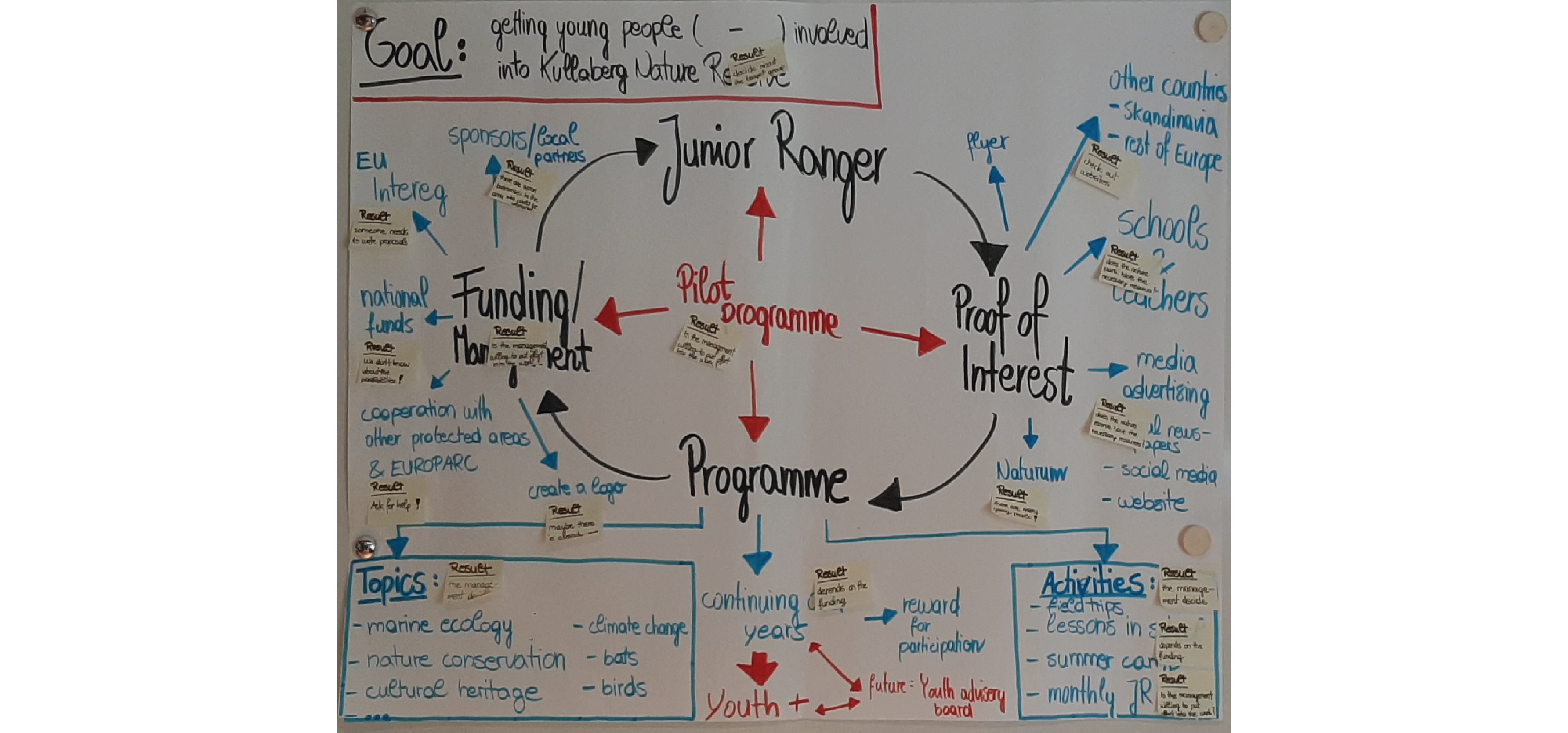
A diagram of the youth involvement process at Kullaberg Nature Reserve
At the end of the three weeks, each of the Youth+ participants prepared a presentation of their home Protected Areain which they had already gained experience. The local staff, Youth+ and Junior Rangers were excited to hear how other Protected Areas were running their Junior Ranger and Youth+ programmes. The audience was eager to travel and experience this first-hand, and plans were made to travel together.
In addition to the insights into the work of the Protected Area, there was also time to get to know Sweden better. Some participants visited Gothenburg, Lund, Malmö, Helsingborg and thanks to the proximity to Denmark also Helsingør. Not only cities, but also the other nature reserves of southern Sweden were explored. The notorious bathing culture became a social event during the early morning swim. To recover from the cold of the sea, the sauna in the accommodation was heated up several times in the evening. The participants also used their free time to better explore the surrounding area. Lonely bays, breathtaking sunsets and jumping tunas were among the absolute highlights here. Barbecue evenings, cooking together (seaweed pasta, köttbullar and much more), a crayfish party, movie nights and karaoke swore the participants together to a team and made the time in Sweden fly by and new friendships developed. Nobody will forget this great time so quickly!
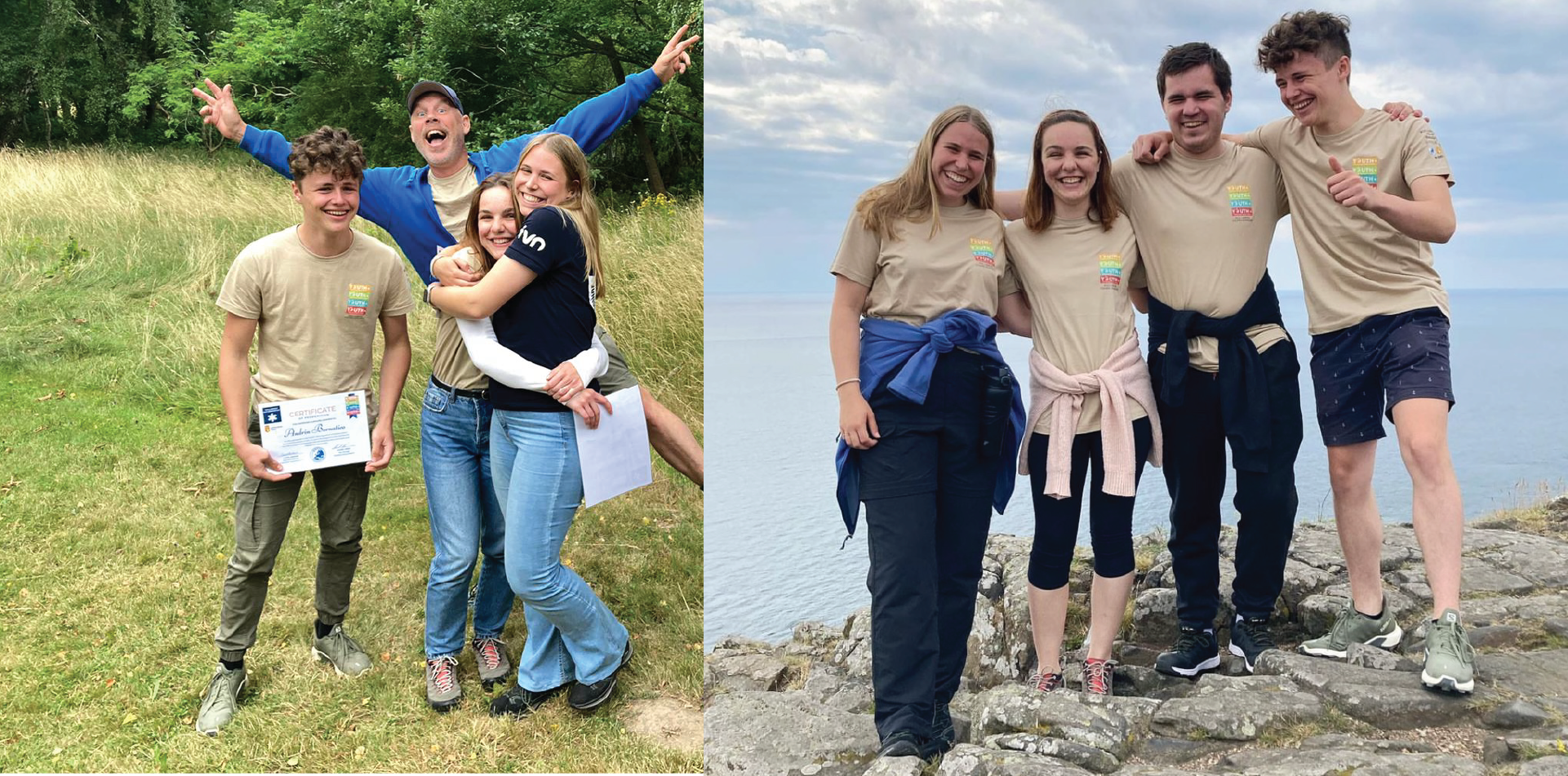
The first group: Silke Peters (NL), Manja Jakopič (SI), Krišs Atvars Saberovs (LV), and Andrin Bornatico (CH)
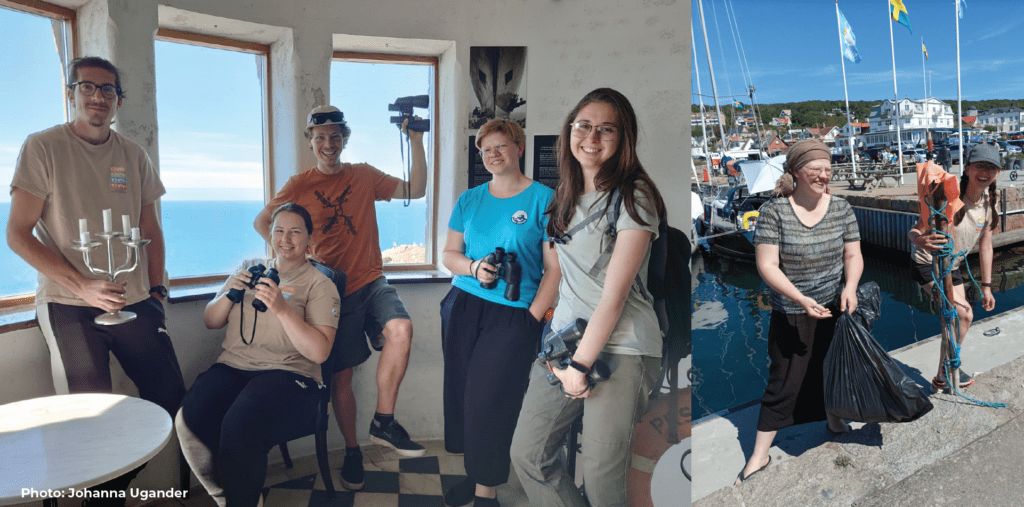
The second group: Alberto Madrassi (IT), Irina Guljavina (EE), Moritz Mairl (IT/AT), Mari Roose (EE), and Judit Márquez Pérez (ES),
This work was supported by:

